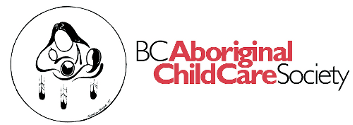The importance of culturally safe assessment tools for Inuit students Jasmine Stoffer [citation] /
Material type: ArticlePublication details: 2017Subject(s): Screening and assessment | Inuit
In:
Australian Journal of Indigenous Education p. 1-7Abstract: There are still no major assessment and diagnostic tools that educators can use to properly assess our Inuit students’ learning. Cultural safety as it is currently defined in New Zealand educational research (Macfarlane et al., 2007) is necessary in creating a classroom community that encourages the appreciation of culture and worldview, and ultimately enables success as defined by the culture and community of the students. Modern day assessment tools used with Inuit students must also conform to this standard of cultural safety in order to ensure the equity and authenticity of the assessment results. There is a need for ongoing research and development of culturally safe assessment tools. To date, recommendations that include collaboration with local populations, evaluation of the tools presently being used, and the due diligence of ensuring these tools are culturally unbiased are a few guidelines that have the potential of creating culturally safe assessments that portray students’ true learning abilities and assist both teacher and community in the support of their students’ learning and success.
ArticlePublication details: 2017Subject(s): Screening and assessment | Inuit
In:
Australian Journal of Indigenous Education p. 1-7Abstract: There are still no major assessment and diagnostic tools that educators can use to properly assess our Inuit students’ learning. Cultural safety as it is currently defined in New Zealand educational research (Macfarlane et al., 2007) is necessary in creating a classroom community that encourages the appreciation of culture and worldview, and ultimately enables success as defined by the culture and community of the students. Modern day assessment tools used with Inuit students must also conform to this standard of cultural safety in order to ensure the equity and authenticity of the assessment results. There is a need for ongoing research and development of culturally safe assessment tools. To date, recommendations that include collaboration with local populations, evaluation of the tools presently being used, and the due diligence of ensuring these tools are culturally unbiased are a few guidelines that have the potential of creating culturally safe assessments that portray students’ true learning abilities and assist both teacher and community in the support of their students’ learning and success.
There are still no major assessment and diagnostic tools that educators can use to properly assess our Inuit students’ learning. Cultural safety as it is currently defined in New Zealand educational research (Macfarlane et al., 2007) is necessary in creating a classroom community that encourages the appreciation of culture and worldview, and ultimately enables success as defined by the culture and community of the students. Modern day assessment tools used with Inuit students must also conform to this standard of cultural safety in order to ensure the equity and authenticity of the assessment results. There is a need for ongoing research and development of culturally safe assessment tools. To date, recommendations that include collaboration with local populations, evaluation of the tools presently being used, and the due diligence of ensuring these tools are culturally unbiased are a few guidelines that have the potential of creating culturally safe assessments that portray students’ true learning abilities and assist both teacher and community in the support of their students’ learning and success.

There are no comments on this title.